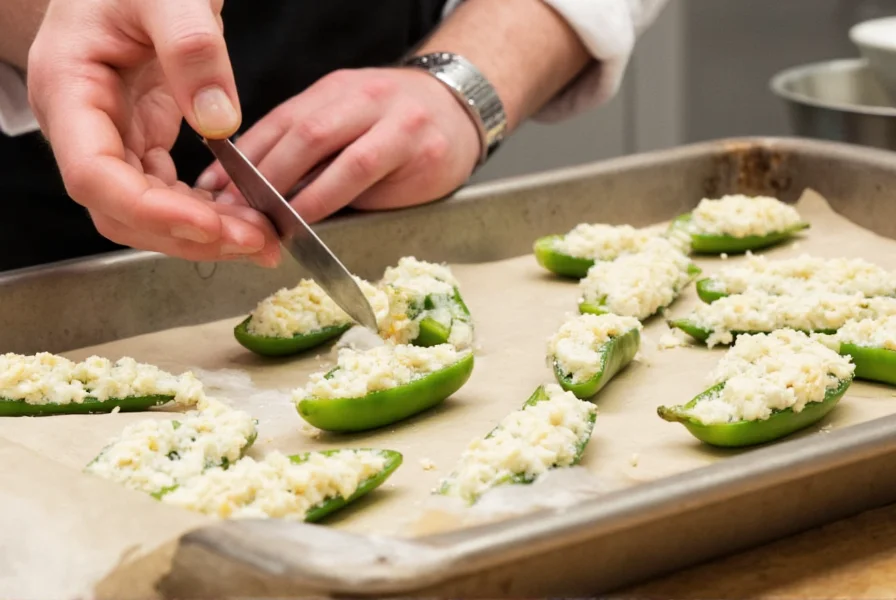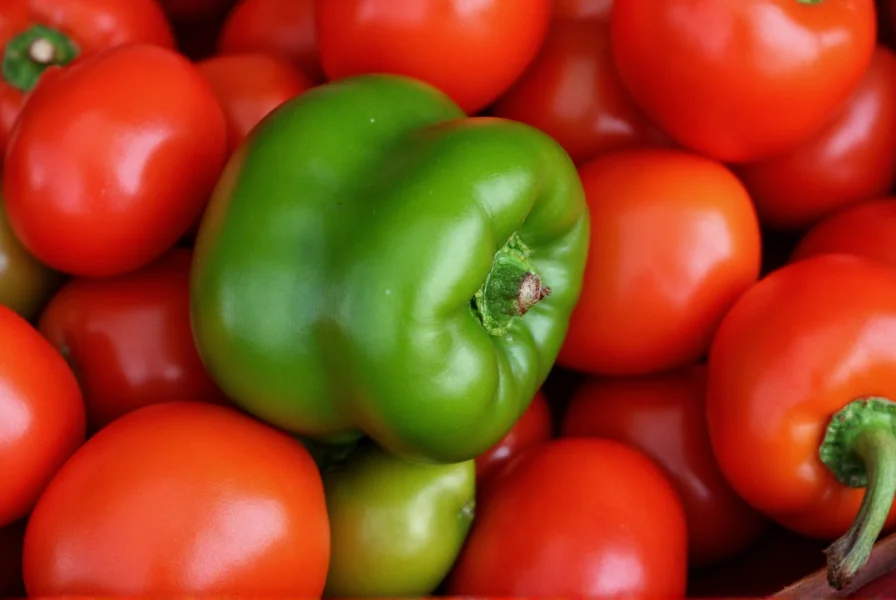Understanding jalapeño peppers begins with recognizing their distinctive characteristics and culinary versatility. These cylindrical chili peppers, scientifically classified as Capsicum annuum, have become a staple in kitchens worldwide due to their balanced heat and flavor profile. Unlike extremely hot varieties that overwhelm dishes, jalapeños provide a manageable kick that enhances rather than dominates recipes.
Origin and Historical Significance
Jalapeños trace their origins to the city of Xalapa in Veracruz, Mexico, where they've been cultivated for thousands of years. The name "jalapeño" literally means "from Xalapa" in Spanish. Pre-Columbian civilizations like the Aztecs incorporated these peppers into their diets long before European contact. Spanish explorers eventually spread jalapeños globally, but Mexico remains the largest producer and consumer of these peppers today.
Physical Characteristics and Varieties
Typical jalapeños measure 2-3.5 inches long and about 1 inch in diameter. They transition from bright green to deep red as they ripen, with some specialty varieties displaying purple or black hues. While most consumers recognize the standard smooth-skinned jalapeño, the "Tepin" variety features distinctive corking—natural striations that often indicate increased heat potential.
| Pepper Type | Scoville Heat Units | Flavor Profile |
|---|---|---|
| Jalapeño (green) | 2,500-5,000 SHU | Grassy, bright, vegetal |
| Jalapeño (red) | 4,000-8,000 SHU | Sweeter, fruitier, more complex |
| Serrano | 10,000-25,000 SHU | Sharper, more intense heat |
| Habanero | 100,000-350,000 SHU | Tropical fruit notes, extreme heat |
Factors Affecting Jalapeño Heat Level
Several elements influence how hot your jalapeños will be. Environmental stress actually increases capsaicin production—the compound responsible for heat. Peppers grown in hotter, drier conditions with less water typically develop more heat. The placenta (white ribs inside the pepper) contains the highest concentration of capsaicin, so removing these significantly reduces heat. Contrary to popular belief, the seeds themselves contain minimal capsaicin but often absorb it from the surrounding membranes.

Nutritional Profile and Health Benefits
Jalapeños deliver impressive nutritional value beyond their heat. A single pepper contains approximately 4 calories and provides 10% of your daily vitamin C requirement. The capsaicin in jalapeños has been studied for potential benefits including:
- Natural pain relief through temporary depletion of substance P
- Metabolic boost and potential weight management support
- Anti-inflammatory properties
- Cardiovascular health benefits through improved circulation
Culinary Applications and Preparation Tips
Professional chefs maximize jalapeño versatility through various preparation methods. For milder applications, remove all white membranes and seeds before dicing. When roasting jalapeños, place them directly over gas flames or under a broiler until charred, then steam in a covered bowl before peeling. This process transforms their flavor profile, adding smoky depth while slightly reducing heat.
Understanding how to properly store jalapeños extends their usability. Keep fresh peppers in the crisper drawer of your refrigerator for up to three weeks. For longer preservation, consider pickling (which maintains crunch while adding tang) or freezing whole (peppers can be used directly from frozen in cooked dishes). Smoked jalapeños become chipotles, offering a completely different flavor dimension ideal for sauces and stews.

Growing Jalapeños Successfully
Home gardeners can successfully grow jalapeños with proper technique. These peppers thrive in warm conditions with at least 6-8 hours of direct sunlight daily. Start seeds indoors 8-10 weeks before the last frost date, maintaining soil temperatures around 80°F (27°C) for optimal germination. When transplanting outdoors, space plants 14-16 inches apart in well-draining soil enriched with organic matter.
Harvest jalapeños when they reach full size and develop a glossy appearance. For sweeter, more mature flavor, allow peppers to ripen fully to red on the plant. Regular harvesting encourages continued production throughout the growing season. Remember that jalapeño plants typically produce 25-35 peppers per season under ideal conditions.
Safety Considerations When Handling Jalapeños
Proper handling prevents discomfort when working with hot peppers. Always wear disposable gloves when preparing multiple jalapeños, especially if you have sensitive skin. Avoid touching your face, particularly eyes, during preparation. If capsaicin exposure occurs, use milk or yogurt to neutralize the burning sensation—water actually spreads the oil rather than removing it.
Common Misconceptions About Jalapeños
Several myths persist about these popular peppers. Contrary to popular belief, smaller jalapeños aren't necessarily hotter—heat depends more on growing conditions than size. The notion that all red jalapeños are hotter than green ones is also inaccurate; while red peppers have typically matured longer, heat variation depends more on specific plant stressors. Additionally, adding dairy to reduce heat in a dish works best when incorporated during cooking rather than as a last-minute addition.
Frequently Asked Questions
How hot are jalapeño peppers compared to other common chili peppers?
Jalapeños measure between 2,500-8,000 Scoville Heat Units (SHU), placing them in the medium-heat category. They're significantly milder than habaneros (100,000-350,000 SHU) but hotter than poblanos (1,000-2,000 SHU). Serranos, often confused with jalapeños, range from 10,000-25,000 SHU, making them 2-5 times hotter than typical jalapeños.
What's the best way to reduce the heat of jalapeños in cooking?
To reduce heat, carefully remove all white membranes and seeds where capsaicin concentrates. Soaking sliced peppers in ice water for 15-30 minutes can also diminish heat. Cooking methods matter—roasting or grilling jalapeños reduces perceived heat while enhancing sweetness. Adding acidic components like lime juice early in cooking helps balance heat, and incorporating dairy products like cheese or sour cream during preparation (not just as garnish) creates a more integrated heat reduction.
Can you grow jalapeño peppers indoors successfully?
Yes, jalapeños can thrive indoors with proper conditions. Choose a dwarf variety like 'Jalafuego' for container growing. Use a 5-gallon pot with drainage holes and quality potting mix. Position plants in a south-facing window receiving 6-8 hours of direct sunlight daily, or supplement with grow lights (16 hours on, 8 hours off). Maintain temperatures between 70-85°F (21-29°C) and humidity around 50-60%. Hand-pollinate flowers using a small brush when indoor conditions prevent natural pollination.
Why do some jalapeños have corking or white streaks?
Corking—those natural white striations on jalapeño skin—indicates the pepper experienced some environmental stress during growth, often from intense sunlight or temperature fluctuations. Contrary to concerns about quality, corked jalapeños frequently contain higher capsaicin levels, making them hotter and more flavorful. These markings don't affect edibility and are actually prized by some chefs for their potential flavor intensity. Corking occurs more commonly in heirloom varieties than commercial hybrids.
How long do fresh jalapeños last in the refrigerator?
Properly stored fresh jalapeños maintain quality for 2-3 weeks in the refrigerator. Place unwashed peppers in the crisper drawer inside a perforated plastic bag to maintain humidity without trapping excess moisture. For extended storage, slice and freeze peppers on a baking sheet before transferring to freezer bags—they'll keep for 6-8 months and can be used directly in cooked dishes. Pickled jalapeños last 6-12 months refrigerated after opening.











 浙公网安备
33010002000092号
浙公网安备
33010002000092号 浙B2-20120091-4
浙B2-20120091-4